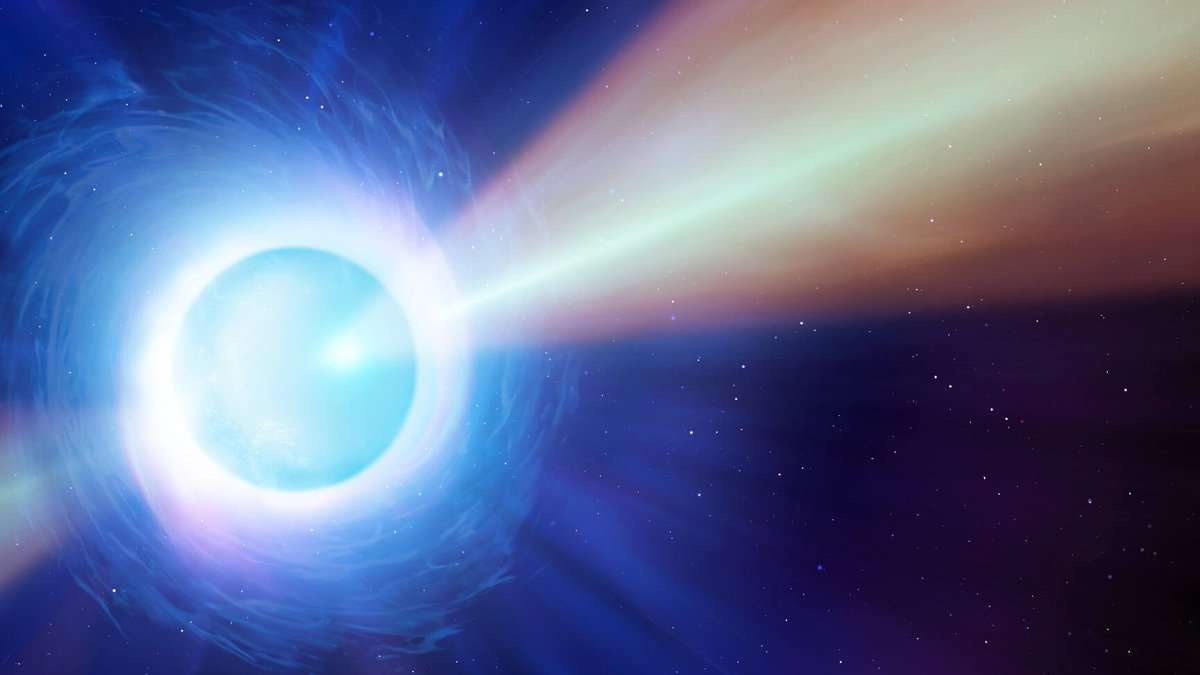
Universe
What is a pulsar?
A pulsar is a celestial object that emits periodic bursts of radio, optical, X-ray, and/or gamma-ray radiation.
It is a small rotating star in which a specific area on its surface emits a narrow beam of radio waves into outer space. When this beam is directed towards Earth, our radio telescopes detect the radiation. As the star continues to rotate, the emission of radiation ceases. However, with each revolution, the star’s beam once again reaches Earth, and we receive its radio signals.
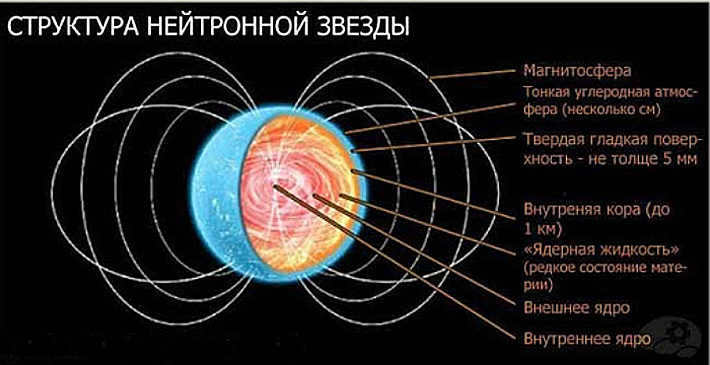
What is the mechanism behind the operation of a pulsar?
Similar to the functioning of a lighthouse with a rotating lantern, a pulsar operates by emitting radiation that appears to pulsate from a distance. This radiation is emitted as a source of radio wave radiation at a specific frequency. Pulsars are a type of neutron star, which is formed through the remnants of a massive star’s explosive demise.
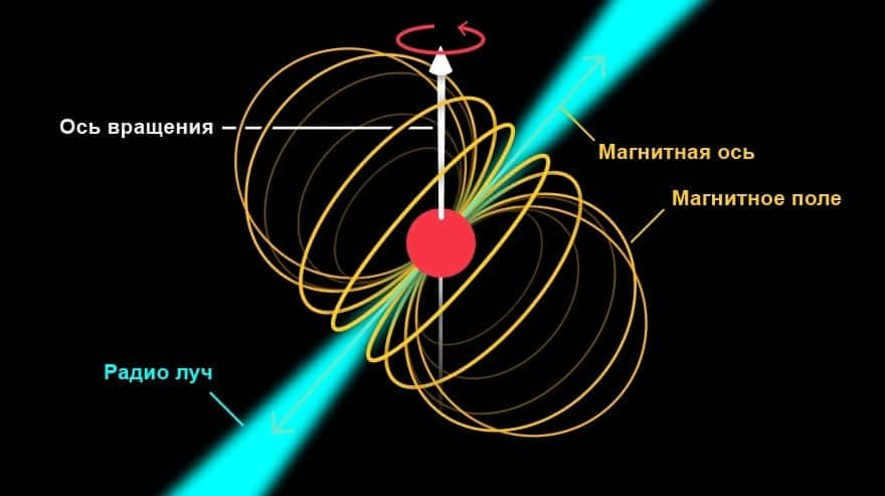
A pulsar is a type of neutron star
A medium-sized star, like the Sun, is a million times larger than a planet such as Earth. Giant stars can be 10 or even 1000 times larger in size than the Sun. However, a neutron star is a giant star that has been compressed to the size of a major city. This compression is what gives a neutron star its peculiar behavior. Despite being equal in mass to a giant star, the mass of a neutron star is squeezed into an incredibly small volume. In fact, just one teaspoon of neutron star matter weighs a billion tons.
Here’s the sequence of events. When a star undergoes a supernova, it leaves behind remnants that are subjected to intense gravitational forces. This phenomenon is known as stellar collapse. As the collapse continues, the gravitational force strengthens, causing the atoms within the star’s material to be forcefully brought closer together. Normally, atoms are spaced apart due to the repulsion between their electron clouds. However, in the aftermath of a massive star’s explosion, the atoms become tightly compacted, to the point where the electrons are physically forced into the nuclei of the atoms.
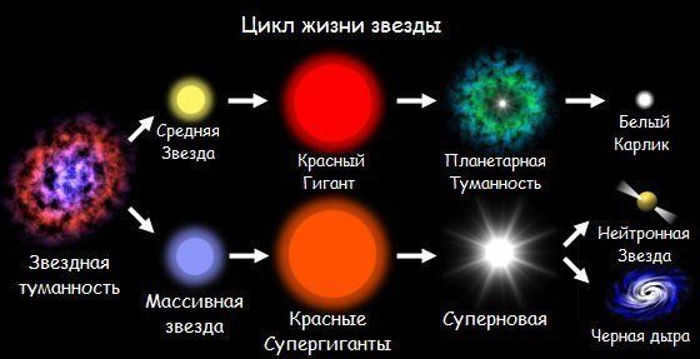
The core of an atom is composed of protons and neutrons. The electrons, which are densely packed in the core, interact with the protons, leading to the creation of neutrons. Gradually, the entire matter of the celestial body transforms into a massive sphere of condensed neutrons. This gives rise to the formation of a neutron star.
Scientists hypothesize that pulsars have existed for an eternity. In any case, they were present long before their discovery. The initial proof of their existence was obtained in November 1967, when several radio telescopes in England detected an unfamiliar source of radiation in the celestial sphere. There are various sources of radio waves in outer space. For instance, radio waves are emitted by water and ammonium molecules floating in interstellar space. These waves are captured by the dish antennas of radio telescopes.
However, the newfound source of radio waves was unlike any other. Jocelyn Bell, a senior student, examined the radio waves recorded by the radio telescope’s recorders. She observed regularly repeating bursts of electromagnetic radiation that arrived at the telescope’s antenna every 1.33733 seconds.
When the news of Bell’s discovery was made public, some scientists speculated that Bell had intercepted a message from an extraterrestrial civilization. Several months later, another instance of pulsating radio emission was detected. This led scientists to dismiss the theory of artificial origin and instead conclude that these emissions were coming from superdense stars. These stars were named pulsars due to their pulsating radiation. It was eventually confirmed that pulsars were, in fact, neutron stars, a long-sought-after discovery for scientists. Since then, numerous similar stars have been identified.
What is the reason behind the pulsation of pulsars?
Scientists attribute the phenomenon to the rapid rotation of these celestial bodies. Just like planets, stars also rotate on their axis. For instance, the Sun completes one revolution in a month. However, as the size of a rotating object decreases, its rotation speed increases. To illustrate, consider a figure skater twirling on ice. When the skater pulls their limbs closer to the body, the rotation rate dramatically accelerates. The same principle applies to superdense stars. A pulsar with a size comparable to that of Los Angeles completes one revolution per second. Some pulsars can even rotate at even higher speeds, reaching up to 1,000 revolutions per second.
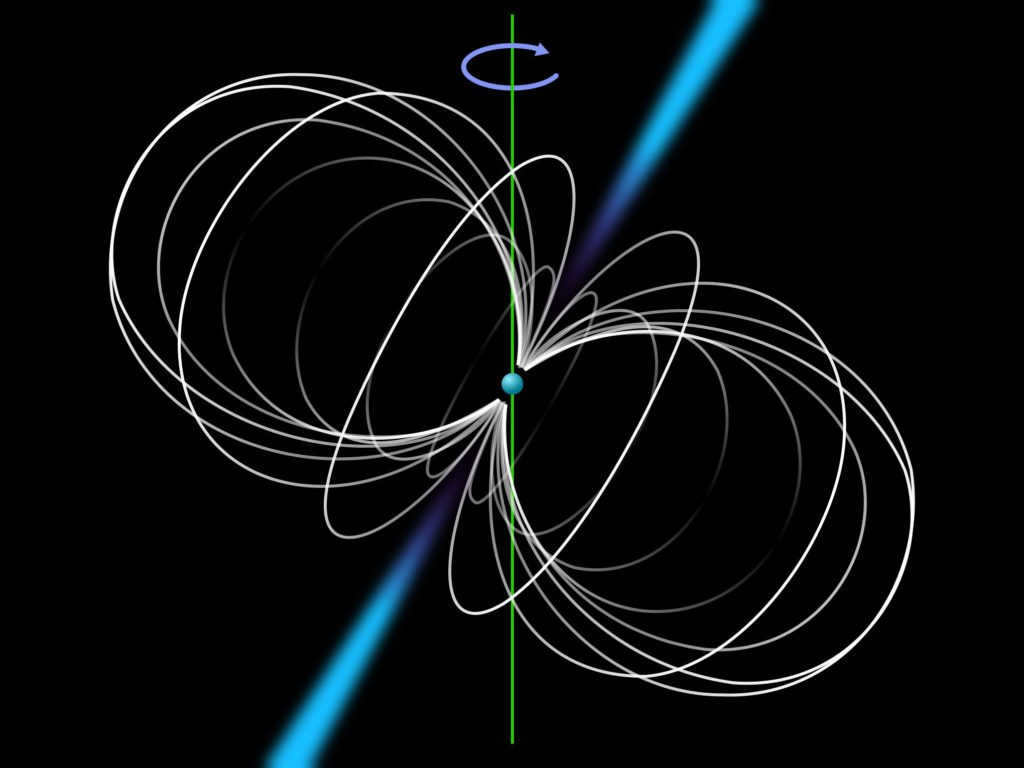
A captivating video on pulsars
If you happen to come across any errors, kindly select the problematic text and press Ctrl+Enter.

In the vast expanse of our Universe, countless stars come into being, exist for countless years, and eventually meet their demise. It is the fate of some of these colossal celestial bodies to conclude their journey with a spectacular explosion, giving rise to the phenomenon known as a supernova.
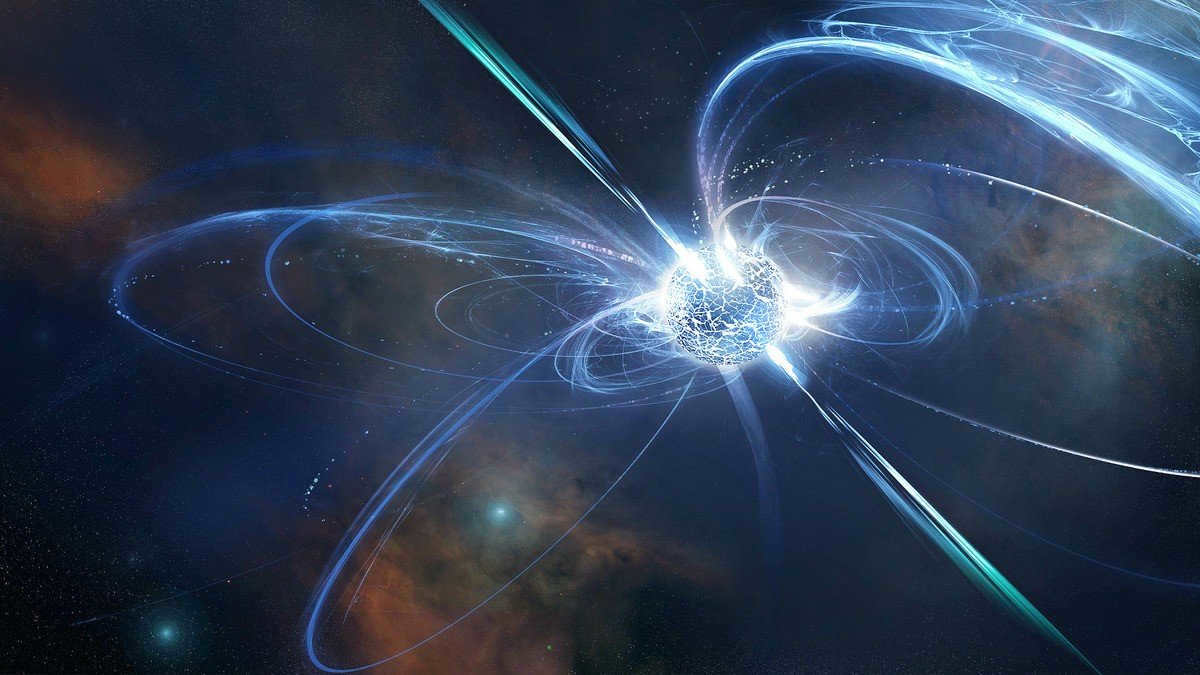
The next stage in the life cycle of a massive star is the formation of either a black hole or a neutron star. One type of neutron star is known as a pulsar, which is a rapidly spinning star with an incredibly strong magnetic field.
Understanding pulsars and their origins
A pulsar is a unique type of neutron star that possesses specific astronomical characteristics. These compact and dense celestial objects rotate at incredibly high speeds, emitting periodic radio waves, as well as optical, X-ray, and gamma-ray radiation. These beams of radio waves are emitted from the pulsar’s poles and create pulses with a specific frequency.
The frequency of these pulses is determined by the angle of the pulsar’s magnetic field in relation to its axis of rotation and can range from 640 pulses per second to a single pulse every five seconds.
Pulsars are a type of variable star that exhibit changes in brightness and radiation intensity due to physical processes occurring within them. These celestial objects cannot be observed directly with the naked eye from Earth. Instead, they are detected using radio telescopes, which are able to capture the radio emissions produced when the pulsar is facing towards our planet. However, as soon as the pulsar rotates away, the signal is no longer detectable.
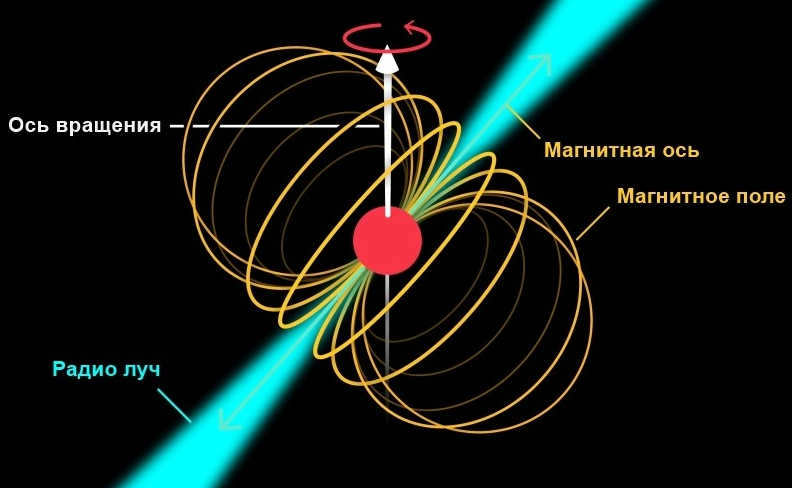
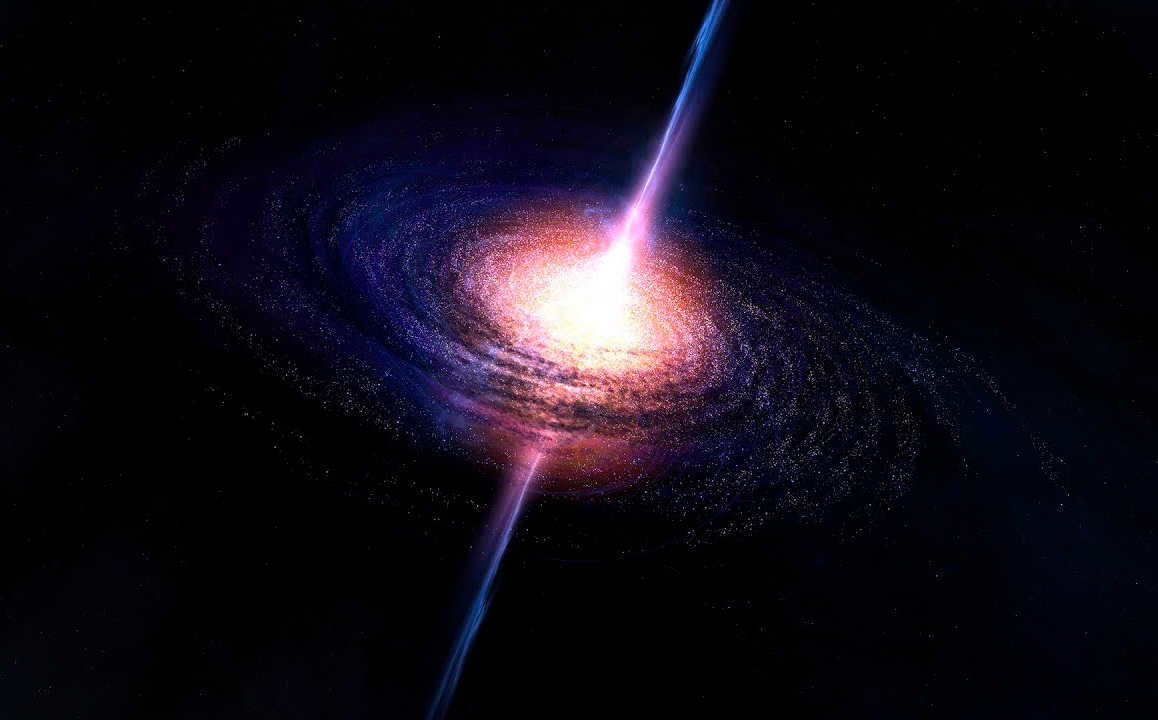
The exact mechanism of how they function is not fully understood in our present time, but it is known that pulsars eventually evolve into incredibly dense stars made up of heavy atom elements, and they are the remnants left behind after a supernova explosion. Nuclear reactions occur within these stars, resulting in the creation of neutrons, which is why they are referred to as neutron stars.
The average distance from Earth to pulsars is several hundred light years. However, there are also more distant objects, such as the double pulsar PSR 1913+16, which is located 18,000 light years away.
Arrangement

Neutron stars are celestial bodies that possess a solid crust measuring approximately 1 kilometer in thickness and a liquid core. This particular composition sets them apart from traditional stars and renders them more akin to planets. As a consequence of their rapid rotation, pulsars adopt a slightly oblate shape.
The emission of radiation causes a depletion of energy and momentum, thereby resulting in a deceleration of the rotation. However, the solid crust prevents the pulsar from fully transitioning into a spherical form.
As the rotational speed decreases, stresses accumulate within the crust until it fractures: the star undergoes a sudden transformation, becoming marginally more spherical, while its equatorial radius decreases by a mere 0.01 mm. Additionally, the rotational velocity experiences a slight increase due to the conservation of momentum. This sequence is then followed by a gradual deceleration of the rotation and another “star-shaking” event, ultimately leading to another surge in rotational speed.

Neutron stars were originally predicted by scientists back in the 1930s, which is quite rare in the field of astronomy. This prediction can be traced back to a paper written by physicist Lev Landau, even before the discovery of neutrons. In his paper, Landau proposed the existence of incredibly dense stellar formations with a density comparable to that of atomic nuclei. However, he did not provide any information regarding the origin or location of these stars.
It wasn’t until 1934 that the true breakthrough occurred. Walter Baade and Fritz Zwicky published a note in which they accurately predicted that neutron stars are actually formed through supernova explosions. As a result, they proposed that these stars can be found in the remnants of such explosions.
Nevertheless, the scientific forecast failed to inspire individuals to embark on a quest for neutron stars. Indeed, the task of locating a ten-kilometer sphere, positioned in some unknown corner of a far-flung supernova remnant, is essentially insurmountable.

On November 28, 1967, the first pulsars were accidentally discovered. Researchers at Cambridge University in the United Kingdom, including Jocelyn Bell and Anthony Hush, were using a radio telescope to study cosmic radio sources. To their surprise, they observed a sequence of regular pulses lasting for 0.3 seconds with a frequency of 81.5 MHz.

This represented a significant departure from the typical chaotic pattern of sporadic and erratic flashes. There was even speculation about the possibility of an extraterrestrial civilization sending these signals to Earth. The pulsations were given the designation LGM (short for “little green men” in English), fueling the speculation.
Efforts were made to decipher any potential code within the received pulses, but this proved to be impossible, despite the involvement of highly skilled codebreakers.
Three years later, scientists discovered three additional pulsating radio sources. It was determined that these pulses were emitted by natural celestial bodies, which were subsequently named pulsars.
The discovery was truly extraordinary, and it was only the designation of the celestial bodies that was incorrect. Pulsars do not actually pulsate. This term was assigned to them when they were initially believed to be stars that, similar to Cepheids, undergo periodic expansion and contraction. It is now understood that pulsars are actually rapidly rotating neutron stars, but the original name persists.
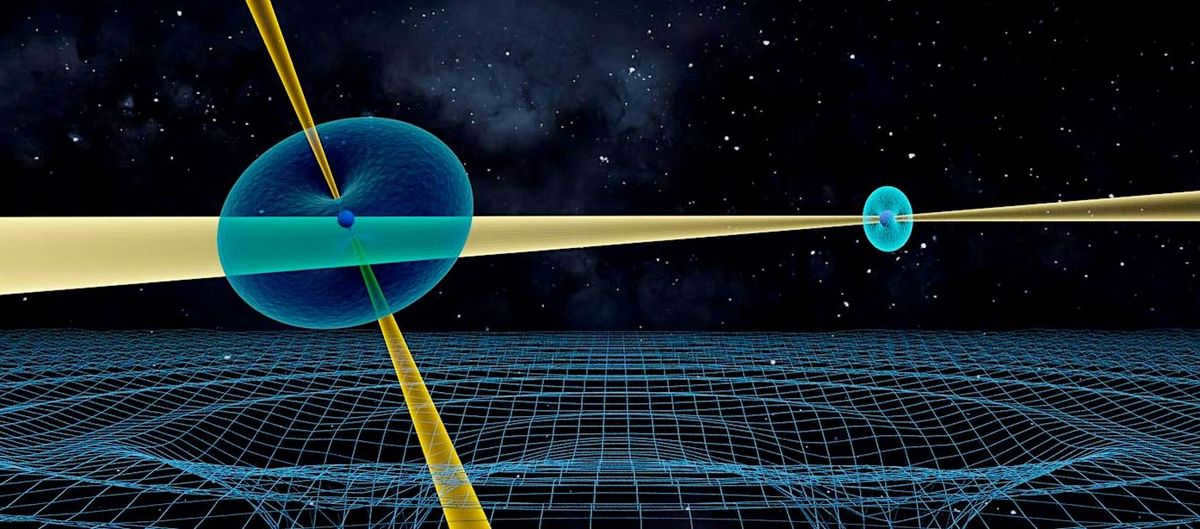
Astronomers posit the existence of various types of pulsars:
- Radio pulsars. This is the most prevalent category. These celestial bodies emit radio pulses at a specific frequency. Scientists theorize that these stars have a diameter of a few kilometers. The magnetic field causes the star’s radiation to resemble a beam of light from a spotlight.
- Optical pulsars. These objects can be detected in the optical range of the electromagnetic spectrum.
- X-ray pulsars. These pulsars emit X-ray radiation. They are known for their variable pulses. X-ray pulsars are binary systems in which one star is a neutron star and the other is a bright giant star.
- Gamma-ray pulsars. These are the most powerful sources of gamma rays with extremely short wavelengths in the Universe.
At the start of the investigation into pulsars, black holes and white dwarfs were considered as potential candidates for this role. However, they were ruled out due to their inability to have such a short rotation period. White dwarfs would be destroyed by the centrifugal force, while black holes are incapable of emitting pulsating waves on their own.
The most well-known of them all
At present, over 1300 pulsars have been detected in the radio wavelength range. The majority of these pulsars (approximately 90%) have periods that range from 0.1 to 1 second. Among them are pulsars with extremely short periods, less than 30 milliseconds, which are commonly referred to as millisecond pulsars.

Newly discovered pulsars are typically given a four-digit number to designate them. The first two digits represent the hours of the pulsar’s right ascension, while the next two digits represent the minutes. In addition, two letters from the Latin alphabet are used to indicate the location of the discovery.
Currently, radio pulsars are designated with the letters PSR, followed by more precise coordinates: right ascension (hours, minutes) and declination (sign, degrees, and arcminutes).
So far, scientists have identified the following pulsars:
- The discovery of the X-ray pulsar in Hercules was made in 1972 through the utilization of the Uhuru research satellite. The remarkable feature of this pulsar is its emission of pulses with a periodicity of 1.24 seconds, which corresponds to the rotational period of a neutron star.
- In the latter part of 1982, astronomers found a millisecond pulsar in the Foxy constellation, with a period of 0.00155 seconds. The rapid rotation of this pulsar implies that it completes 642 revolutions per second. The observation of such extraordinarily short periods in pulsars served as the primary and most compelling evidence for identifying these celestial objects as rotating neutron stars.
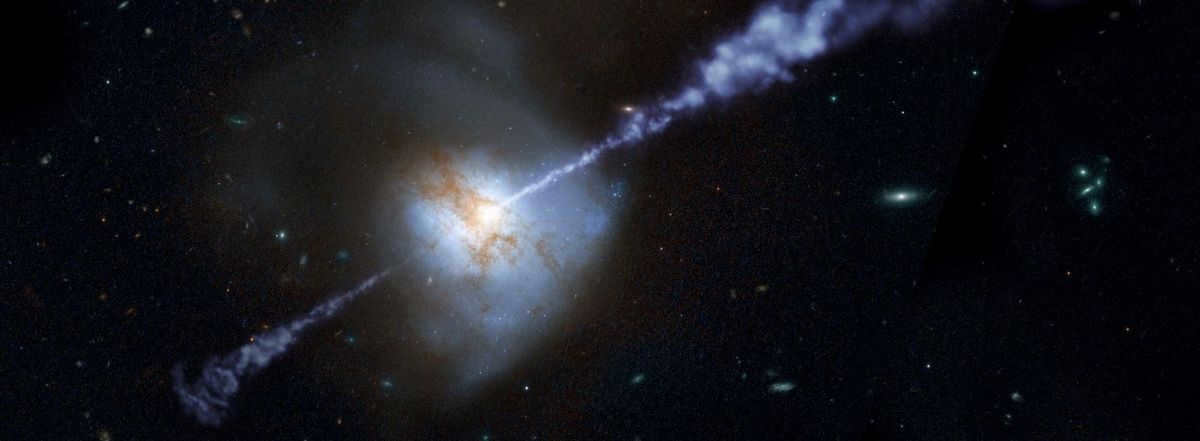
- In the Milky Way, the central part of our galaxy, researchers have additionally discovered a pulsar. Scientists are examining it in order to obtain precise data regarding the weight and temperature of the black hole that has been located in this particular area.
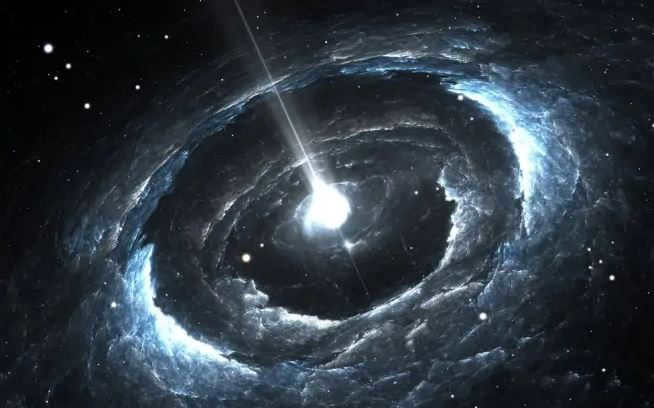
- Back in 2003, a remarkable astronomical finding was made: a binary star system composed of two pulsars named PSR J0737-3039A and PSR J0737-3039B. At present, this unique configuration remains the sole known instance of a double pulsar.
In 2015, researchers from the Fermi Gamma-ray Space Telescope Collaboration made a groundbreaking discovery – they found the first gamma-ray pulsar outside of our galaxy.
The pulsar, known as PSR J0540-6919, is located in the outskirts of the Tarantula Nebula, which is part of the Goldfish constellation in the Large Magellanic Cloud. This cloud is situated 163,000 light-years away from the Milky Way. The PSR J0540-6919 is a young star that rotates at a rapid rate, producing visible, X-ray, and gamma-ray radiation. In fact, its radiation is twenty times more powerful than the previous record-holder, a pulsar found in the Crab Nebula.
Compared to the Crab Nebula pulsar, the PSR J0540-6919 is approximately twice as old and has an age of around 1,700 years. This is relatively young, considering that most of the 2,500 known pulsars are between tens of thousands and hundreds of millions of years old.
It required over six years of observations to separate the pulsations of pulsar J0540 (there is currently no data on the emission intensity of the second pulsar).
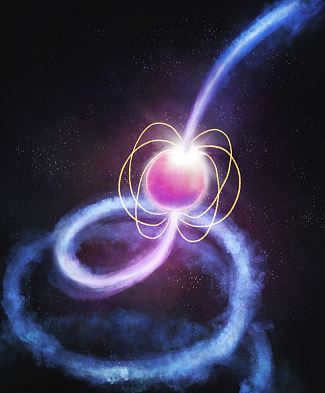
- In 2017, researchers discovered the pulsar NGC 5907 X-1. Situated in the NGC 5907 spiral galaxy, which is located 50 million light-years away from Earth, this pulsar emits as much energy in 1 second as the Sun does in 3.5 years, making it the brightest known pulsar.
- The discovery of the millisecond pulsar PSR J0952-0607 (J0952) also took place in 2017. This particular pulsar is located in the Sextant constellation, at a distance of 3200-5700 light-years. Scientists estimate its mass to be about 1.4 times that of the Sun, and it has a small companion star with a mass of approximately 20 times that of Jupiter, orbiting around it every 6.4 hours. The gravitational pull of the neutron star causes it to accrete matter from its companion, resulting in an increase in its rotational speed.
Common queries
Is it possible to observe a pulsar without any aids? Unfortunately, no. The pulsar’s electromagnetic output is highly focused, emitting only within a very narrow angle along its rotational poles. The visual depictions we frequently encounter depict composite images that combine X-ray data of the star with a color scheme that represents the energy levels of the detected emissions.
Pulsars are generally benign, even when subjected to an electromagnetic beam, as they are primarily composed of radio waves. However, if a pulsar is in close proximity to Earth, potential problems may arise. When a star undergoes a supernova explosion, a significant amount of energy and matter is released. If a pulsar is situated near enough to Earth, it has the potential to annihilate all life on the planet. Conversely, if the pulsar is distant enough that it does not pose a direct threat, it can still be hazardous in other ways. For instance, an electromagnetic beam emitted by a neutron star can contain X-rays if it accretes matter. If this beam were to make contact with Earth, it could expose the planet to ionizing radiation, which is dangerous. Nevertheless, thus far, no pulsar has been detected in close enough proximity to pose harm to Earth.
Watch a video summarizing the scientific evidence
Pulsars, which are compact objects with a spherical shape and a size no larger than that of a large city, have the remarkable characteristic of being more massive than the Sun. These fascinating celestial bodies are utilized as tools for examining the extreme states of matter, identifying planets beyond our own solar system, and calculating cosmic distances. Furthermore, they have played a crucial role in the detection of gravitational waves, which serve as evidence for energetic occurrences such as the collision of supermassive black holes. Pulsars were initially discovered in the year 1967.
What exactly is a pulsar?
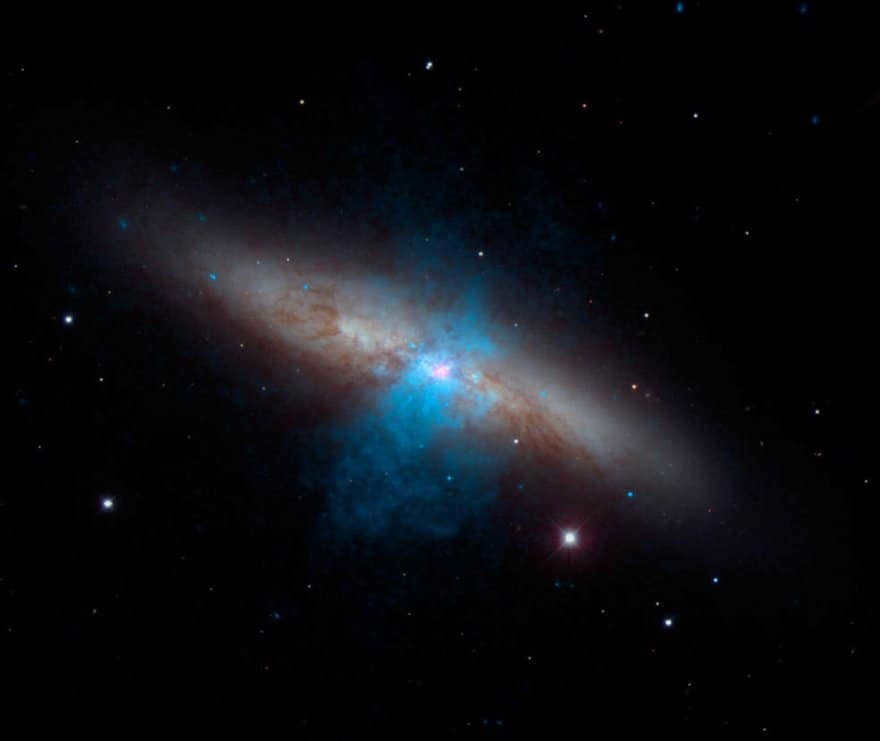
A pulsar (pink) can be observed at the center of the M82 galaxy.
If you look up at the sky, a pulsar seems like a regular twinkling star that follows a specific pattern. However, in reality, their light does not flicker or pulsate, and they do not resemble stars.
A pulsar emits two continuous narrow beams of light in opposite directions. The flickering effect occurs because they are rotating (similar to a lighthouse). When the beam reaches Earth, it rotates again. Why does this happen? The reason is that the light beam of a pulsar is usually not aligned with its axis of rotation.
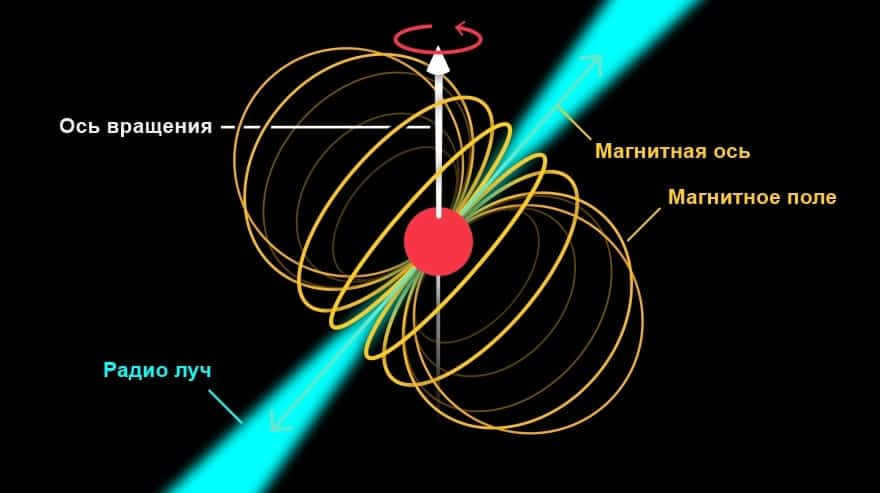
If the pulsating is caused by rotation, then the rate of the pulses reflects the speed at which the pulsar spins. There have been a total of 2,000 pulsars discovered, with most of them completing one revolution per second. However, there are approximately 200 objects that manage to complete a hundred revolutions in the same timeframe. The fastest ones are referred to as millisecond pulsars because they complete 700 revolutions per second.
Pulsars cannot be classified as stars, at least not in a “living” sense. Instead, they are neutron stars that form after a massive star depletes its fuel and collapses. This results in a powerful explosion known as a supernova, with the remaining dense material transforming into a neutron star.

Countless pulsars have been discovered in the universe.
Pulsars in space have a diameter ranging from 20 to 24 kilometers, which is twice the mass of the sun. To put it into perspective, a piece of a pulsar the size of a sugar cube would weigh a staggering 1 billion tons. That’s equivalent to the weight of Mount Everest in the palm of your hand! However, there is an even denser celestial object out there – the black hole. The most massive black hole discovered so far has a mass of 2.04 times that of the sun.
Pulsars possess incredibly powerful magnetic fields, ranging from 100 million to 1 quadrillion times stronger than Earth’s magnetic field. In order for a neutron star to emit pulsar-like light, it must have the perfect balance between magnetic field strength and rotational frequency. It’s possible for a radio wave beam to be obstructed by the magnetic field of a pulsar and remain undetectable by ground-based telescopes.
What is the reason behind the rotation of pulsars?
Pulsars have a slow rate of one rotation per second, while the fastest ones can reach hundreds of revolutions per second, known as milliseconds. The spinning phenomenon occurs because the stars from which pulsars are formed were also spinning initially. However, to achieve such high speeds, an additional energy source is required.
Scientists speculate that millisecond pulsars acquire their high rotation speeds by stealing energy from a neighboring star. The presence of foreign matter can be observed, which increases the rotation speed. Unfortunately, this process is detrimental to the companion star, as it may eventually be completely absorbed by the pulsar. These systems are commonly referred to as “black widows,” named after a species of spider known for its dangerous nature.
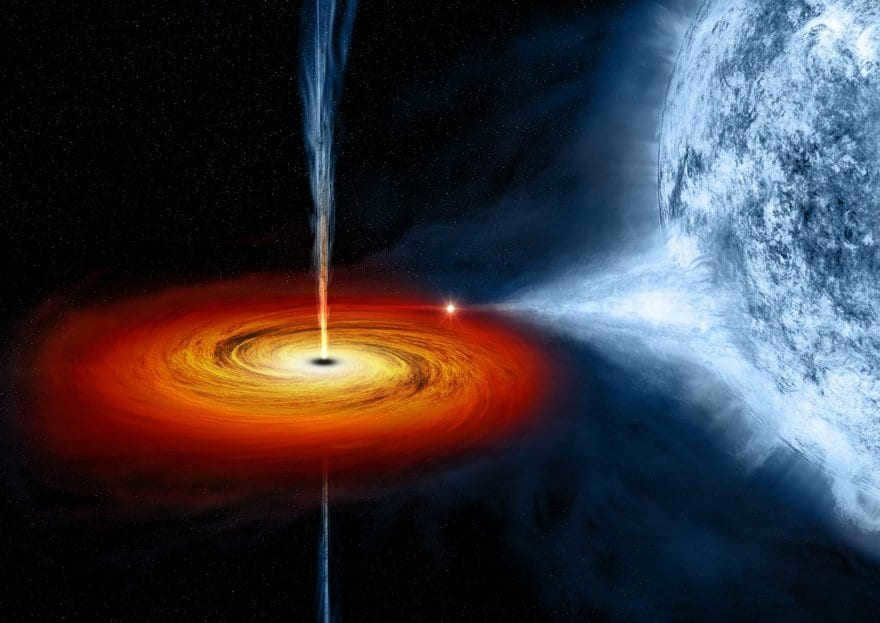
An artistic representation of the connection between a pulsar and its companion.
Pulsars have the ability to emit light across a range of wavelengths, from radio waves to gamma rays. However, the exact mechanism behind this phenomenon remains a mystery to scientists. It is believed that a different mechanism is responsible for each wavelength. Radio waves, for example, form beacon-like beams that are bright and narrow, resembling coherent light where particles are focused into a beam.
The strength of a pulsar’s magnetic field weakens as its rotation speed increases. Nevertheless, even the fastest rotating pulsars are capable of emitting rays as bright as their slower counterparts.
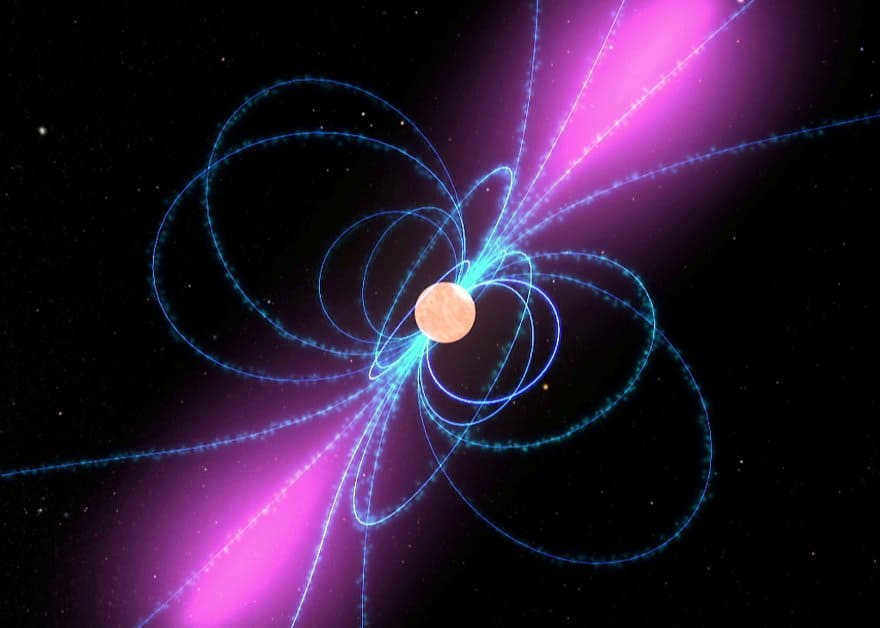
The image displays the rotation of magnetic field lines surrounding the pulsar. The vibrant purple illumination corresponds to gamma rays.
During the rotation, the magnetic field generates an electric field that induces motion in charged particles, resulting in the formation of an electric current. The region above the pulsar’s surface, where the magnetic field prevails, is known as the magnetosphere. Within this region, charged particles experience an extraordinary acceleration due to the potent electric field. With each acceleration, they emit light, which is observable in the optical and X-ray spectrums.
However, the origin of gamma rays appears to be situated elsewhere in proximity to the pulsar, resembling the shape of a fan.
The primary technique for discovering pulsars in space continues to be the use of radio telescopes. These objects are relatively small and faint compared to other celestial bodies, requiring a full-sky scan in order to detect them. Many pulsars have been identified using the Parkes Observatory in Australia, but the upcoming Square Kilometer Array (SKA) is expected to provide a wealth of new data starting in 2018.
In 2008, the GLAST telescope was launched, leading to the discovery of 2050 pulsars that emit gamma rays. Among these, 93 were classified as millisecond pulsars. This telescope is particularly valuable because it enables a comprehensive survey of the entire sky, unlike other telescopes that focus on specific regions within the Milky Way galaxy.
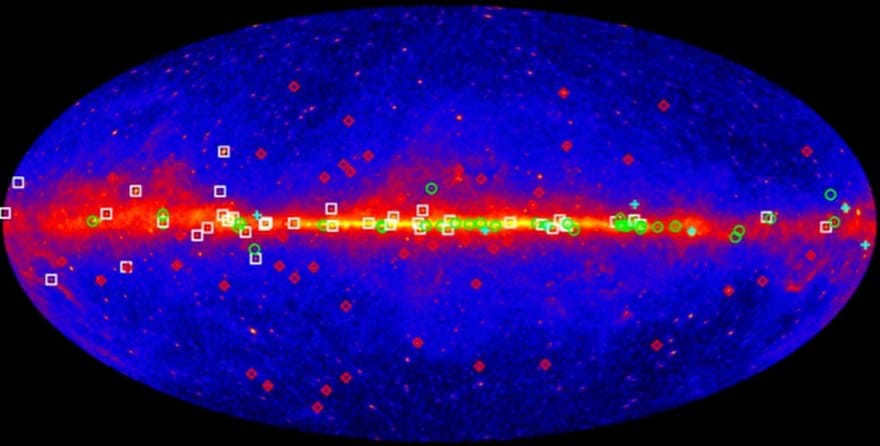
A map of the sky displaying gamma-ray pulsars discovered using the GLAST telescope
When searching for various wavelengths, there can be complications. It should be noted that while radio waves are highly powerful, there is a chance that they may not reach the lens of the telescope. On the other hand, gamma rays cover a wider area of the sky, yet they are not as bright.
At present, scientists have identified 2300 pulsars through radio waves and 160 through gamma rays. Additionally, there are 240 millisecond pulsars, with 60 of them emitting gamma rays.
Applications of Pulsars
Pulsars serve not only as fascinating celestial bodies, but also as invaluable tools. The emissions of light they produce can provide valuable insights into internal processes, enabling researchers to gain a deeper understanding of the physics behind neutron stars. These extraordinary objects exhibit such extreme pressures that the behavior of matter within them deviates from our familiar norms, resulting in the formation of an enigmatic substance known as “nuclear paste.”
The precise and regular pulses emitted by pulsars make them highly valuable in various applications. Scientists consider these pulses as cosmic clocks, allowing them to accurately measure time and identify specific objects. It is through this method that speculation regarding the existence of other planets first arose. In fact, the discovery of the first exoplanet was made in orbit around a pulsar.
It is important to remember that while “blinking,” pulsars continue to move, allowing them to be utilized for measuring cosmic distances. Additionally, they played a role in the testing of Einstein’s theory of relativity, similar to instances involving gravity. However, the consistency of the pulsations can be disrupted by gravitational waves, as was observed in February 2016.
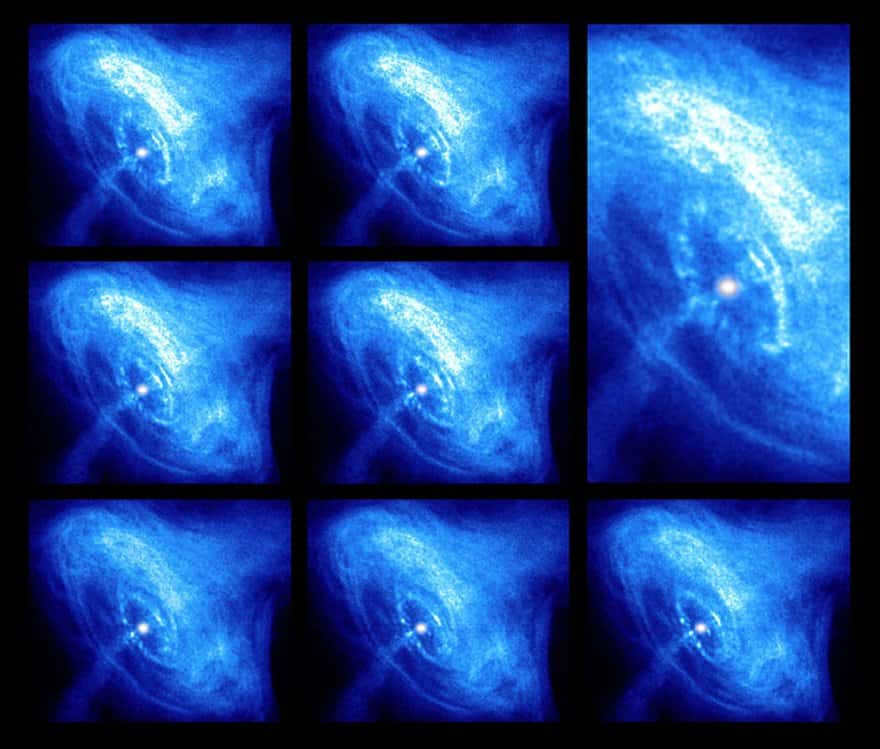

A captured image of the pulsar PSR B0531+21 by the Chandra X-ray Observatory reveals a white pulsar and streams of ejected material at its core.
Over time, the speed of all pulsars decreases. The emission of radiation is fueled by the magnetic field generated by the rotation. Eventually, this magnetic field also weakens and ceases to emit rays. Scientists have established a specific threshold where gamma rays can still be detected before radio waves. Once a pulsar falls below this threshold, it is classified as a pulsar graveyard.
If a pulsar originates from the remnants of a supernova, it possesses a significant reserve of energy and rotates at a high speed. An example of such a young pulsar is PSR B0531+21. It can remain in this phase for hundreds of thousands of years before it begins to lose momentum. The majority of pulsars, known as middle-aged pulsars, only emit radio waves.
Nevertheless, the longevity of a pulsar can be prolonged if it happens to have a nearby companion. In such cases, the pulsar is able to gravitationally pull in material from its companion, which results in an increase in its rotational speed. These transformative processes can occur at any given moment, allowing the pulsar to essentially experience a form of rebirth. This type of interaction is commonly referred to as a low-mass X-ray double system. It is worth noting that the oldest known pulsars are typically only a few milliseconds old, while a select few have managed to survive for billions of years.
Neutron stars are enigmatic entities, surpassing the mass of the Sun by a factor of 1.4. They are created following the detonation of more massive stars. Let us delve deeper into these formations.
Upon the explosion of a star 4-8 times more massive than the Sun, a core of immense density remains, which proceeds to undergo collapse. The gravitational force exerts such intense pressure on the matter that it compels protons and electrons to merge, resulting in the emergence of neutrons. This is the genesis of a neutron star characterized by its high density.

Neutron stars emerge following the demise of massive stars in the form of supernovae.
These colossal entities can only achieve a size of 20 kilometers. To put the density into perspective, a mere handful of material from a neutron star would weigh a staggering billion tons. The gravitational force on such an object is two billion times more powerful than that of Earth, and there is sufficient gravitational energy to enable scientists to observe the star’s posterior through gravitational lensing.
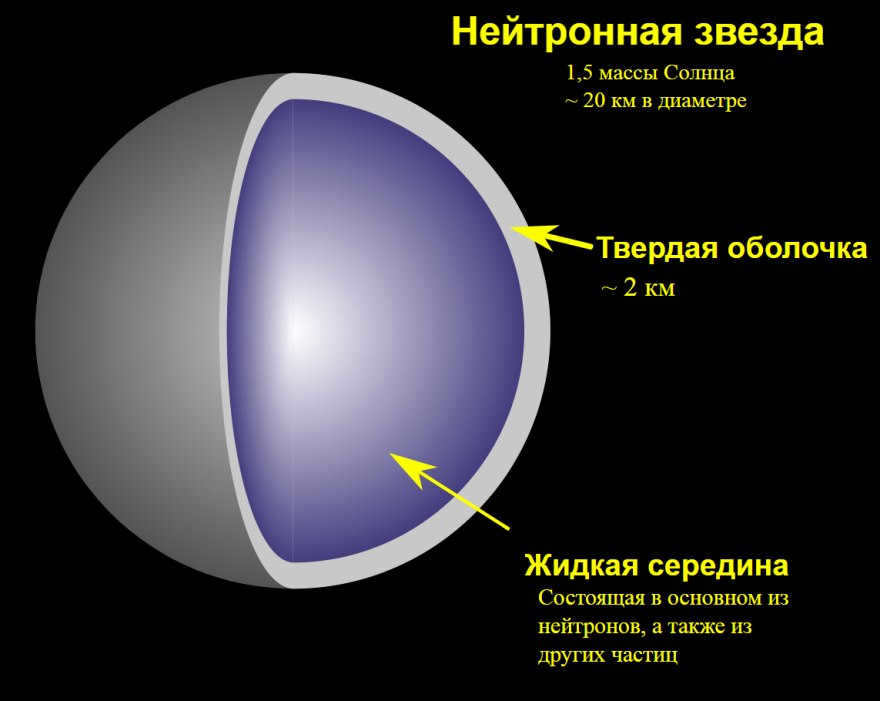
Discovering the internal mechanisms of a pulsar
The powerful explosion of a supernova sets off a force that propels the neutron star into a rapid spin, with speeds reaching multiple revolutions per second. In some cases, they can even accelerate up to an astonishing 43,000 times per minute.
When a neutron star exists within a binary system where a supernova occurred, the spectacle becomes even more remarkable. If the second star is less massive than our Sun, it exerts a gravitational pull on its companion, causing the material to form a “Roche lobe.” This lobe is a spherical cloud of matter that orbits the neutron star. However, if the companion star is ten times the mass of the Sun, the material transfer is less stable. The matter flows along the magnetic poles, generating intense heat and giving rise to X-ray emissions.
By 2010, there had been a discovery of 1800 pulsars using radio detection, while another 70 were found through gamma rays. Interestingly, some of these pulsars have been observed to have planets orbiting them.
Various Categories of Neutron Stars
Among certain types of neutron stars, there are those that exhibit jets of material flowing at incredibly high speeds, almost reaching the speed of light. As these jets pass by us, they emit flashes of light, similar to the beam of a lighthouse. It is for this reason that they are known as pulsars.
X-ray pulsars, on the other hand, acquire material from their more massive neighboring stars. When this material interacts with the pulsar’s magnetic field, it generates powerful beams that can be observed across various spectrums, including radio waves, X-rays, gamma rays, and even optical light. These particular pulsars are referred to as accretion pulsars, as they are located within a companion star.


The arrangement of a magnetic field in a neutron star
Pulsating neutron stars adhere to the motion of celestial bodies as energetic electrons interact with the magnetic field of the pulsar over its poles. The acceleration of the matter inside the magnetosphere of the pulsar leads to the emission of gamma rays. The release of energy decelerates the rotation.
The magnetic fields of magnetars are 1,000 times more intense than those of neutron stars, which significantly prolongs the star’s rotation period.
The Universe is teeming with countless stars, and our Sun is just one of them, and certainly not the largest (although it is over 300,000 times the size of Earth). These celestial objects are akin to individuals: they are born, they exist, and they eventually perish. However, their demise occurs over tens or hundreds of billions of years. In the vastness of space, there exist supergiants – the existence of such stars culminates in a cataclysmic explosion. This phenomenon is known to scientists as the birth of a supernova, which is succeeded by either the formation of a black hole or a neutron star. The latter, known as a pulsar, will be the focus of the Alvito material.
What are Pulsars – the Space Objects
A pulsar is a type of neutron star in astronomy. Neutron stars are the remnants of massive stars that have survived a supernova explosion. These celestial bodies are small and dense, and they rotate at incredibly high speeds. As a result, they emit periodic radio waves, as well as optical, X-ray, and gamma-ray radiation. Pulsars emit pulses of radiation at a specific frequency, which is determined by the angle between their magnetic field and rotational axis. This frequency can range from 640 pulses per second to just one pulse every five seconds.
Pulsars are classified as external variable stars, meaning their brightness and radiation intensity vary due to physical changes occurring within them.
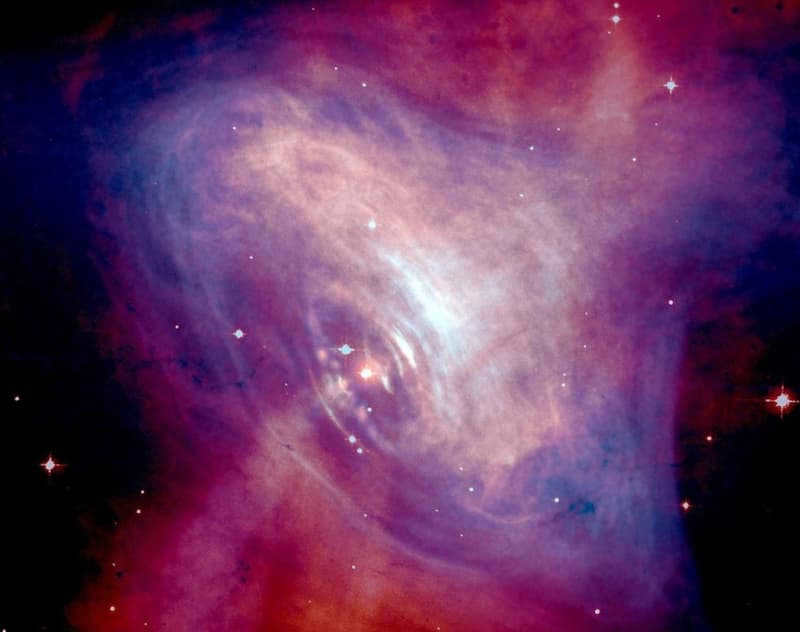
The Crab Nebula, featuring the pulsar PSR B0531+21 in its core, is depicted in a composite image combining optical photography from the Hubble Telescope and X-ray observations from the Chandra X-ray Observatory (NASA/HST/ASU/J. Hester).
Within the vastness of space, scientists have made a remarkable discovery: a cluster of celestial bodies emitting short bursts of radio waves. These enigmatic entities are known as quasars.
Quasars were first detected in the 1960s when researchers noticed peculiar radio emissions. They are active galactic cores, comparable in size to our own solar system. Scientists have determined that these cores contain supermassive black holes with billions of times the mass of our sun, and their accretion disks serve as the most potent sources of energy.
It is conceivable that a quasar resided at the center of the Milky Way millions of years ago. However, as time passed, the available matter for the black hole to consume dwindled, causing the process to cease.
Supernova remnants
Objects in the cosmos that have a mass greater than 10 times that of our Sun are known as supergiants. These celestial bodies gradually increase in size until their internal fuel is depleted. Consequently, these luminous entities lose their ability to sustain thermonuclear reactions, causing a disruption in the delicate balance between gravity and energy that once held the star together in space. This disruption leads to a cataclysmic explosion known as a supernova birth.
The explosion of a supergiant unleashes tremendous amounts of energy, propelling the outer layers of the former star into space. At the core, two possibilities emerge: it either collapses and forms a black hole, or if there is insufficient mass to create a “matter sink,” a neutron star is born.
If the Sun were to experience such an event, it would have catastrophic consequences for the Earth. However, this scenario is not applicable to our star due to its small mass and size. Instead, the Sun is destined to become a white dwarf, although this transformation will not occur for billions of years.
Varieties of pulsars
Astronomers make use of mathematical calculations to propose theories about the composition and structure of celestial bodies. They have identified several categories of pulsars:
- Radio pulsars. This is one of the most prevalent types of pulsars. These objects emit radio pulses at a specific frequency, which can be detected using radio telescopes. Scientists estimate that the diameter of these stars is only a few kilometers. The magnetic field surrounding the star causes the emitted radiation to resemble a spotlight.
- Gamma-ray pulsars. These celestial bodies are the most potent emitters of gamma rays, a form of electromagnetic radiation characterized by its incredibly short wavelengths.
- Optical. These entities can be observed within the optical range of the electromagnetic spectrum.
- X-ray. Emitting X-ray radiation, these phenomena are distinguished by their fluctuating pulses.
Discovery of pulsars
The first pulsar was found on November 28, 1967. It was Cambridge University graduate student Jocelyn Bell who made this groundbreaking discovery. Bell initially recorded mysterious signals, which were initially thought to be interference. However, it was later determined that these pulses were actually of extraterrestrial origin and were emitted by an object that had not been studied before.
Pulsars are celestial bodies that were only discovered in the past century, causing great interest among the scientific community and enthusiasts of the subject. This article will provide more information on what pulsars are and how they differ from other stars.

Exploring pulsars
It is worth noting that RAE, púlsar or pulsar, in Spanish, is derived from the combination of two English words – an abbreviation of puls(ating st)ar-, which signifies:
“A star that emits very intense radiation at short and regular intervals”,
In Spanish, its meaning can be underscored in two significant and moving ways: “A pulsar was formed at the center of the explosion”, “Some supernovae formed a pulsar”, and it can also be used in the plural form; pulsars and pulsars.
This designation “pulsating star”, which has been adopted, has been utilized to refer to another type of star.
After explaining the orthographic terminology, let’s move on to the scientific terminology, which is defined by Jocelyn Bell (Diario El País, 1999).
"A pulsar, also known as a radio pulsar, is similar to a lighthouse. It is an extremely compact object that spins on its axis and emits radio waves. We estimate that it has a mass of approximately one thousand quadrillion tons and a radius of just 10 kilometers. It is formed from the catastrophic explosion of a massive star ten times the size of our Sun."
Pulsars are celestial bodies with a powerful magnetic field that enables them to emit radiation regularly.
They consist of neutrons, which cause them to emit these pulses of "electromagnetic radiation" with a rotation period determined by the star’s speed.
The unique characteristics of pulsars
- Pulsars possess the remarkable ability to rotate on their axis, completing several hundred revolutions per second.
- They possess an astonishing velocity, reaching speeds of up to 60,000 km/s, allowing them to traverse vast distances in space.
- These celestial objects generate a powerful force, enabling them to expand away from their equatorial region.
- Due to their immense density, pulsars experience a combination of centrifugal force and gravitational pull, preventing them from collapsing.
- Pulsars exhibit a wide range in size, with some measuring only a few thousand meters while others span nearly 20 kilometers.
- Neutron stars, known for their incredible density, serve as ideal candidates for pulsars.
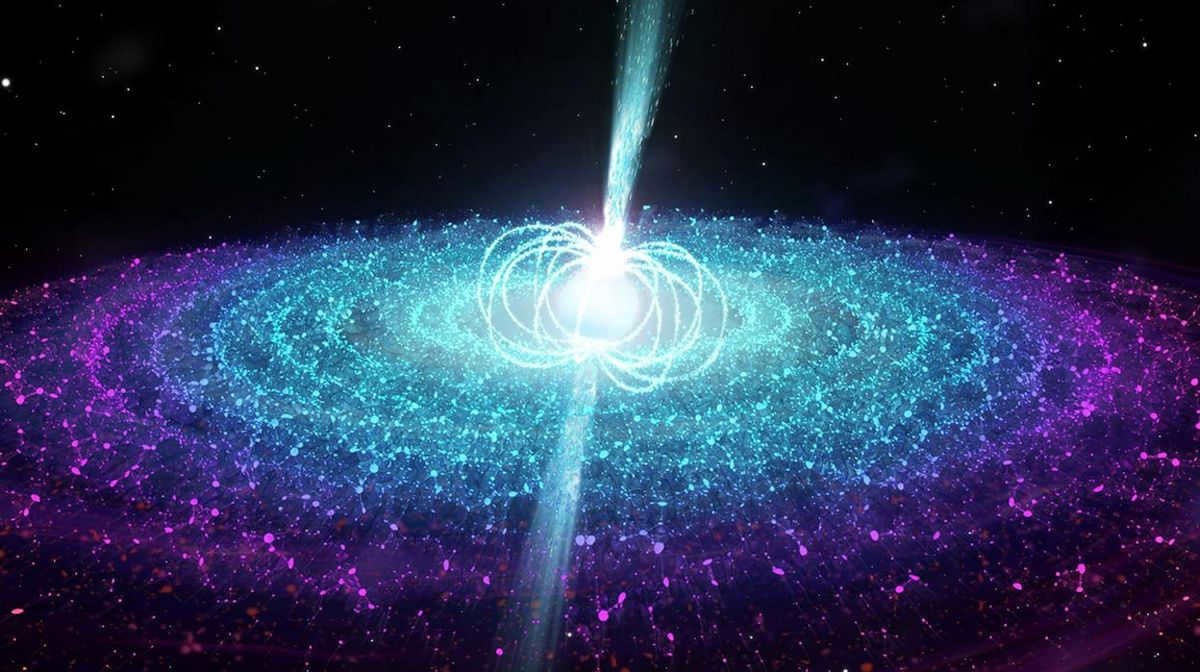
What is the mechanism behind the motion of pulsars?
- Pulsars are mobilized by the rapid rotation of magnetic fields, causing electrons and protons to spin at high velocities.
- The presence of dense matter, such as gas molecules or interstellar dust, further enhances the speed and accelerates the pulsars, creating spirals towards their magnetic poles.
A neutron star, with a mass twice that of our Sun, would have a diameter of only 20 kilometers. Consequently, the magnetic field of a neutron star can be incredibly intense.
This phenomenon is still a mystery to scientists, who are accustomed to observing a rotation axis like that of Earth, which is centered on the planet and runs from pole to pole. How does the phenomenon of accelerated pulsar activity actually work?
Over the years, Earth has been studied and explained through various theories, such as Kepler’s Laws in the 17th century, Newton’s law of universal gravitation, and even Democritus’ atomic theory. According to Democritus, every material particle attracts every other material particle with a force that is directly proportional to their masses and inversely proportional to the square of the distance between them.
Astronomers have observed that the “radiation cannons” associated with pulsars rotate in a circular motion, causing the magnetic poles to vary in direction.
For this particular reason, one wonders: what is the cause behind the fact that numerous pulsars possess the peculiar characteristic of having their “magnetic poles” situated outside their axis of rotation?

Magnetic Jets
It is possible that individuals frequently observe “magnetic jets”. When gazing at the celestial canopy, one may witness a star with its “magnetic pole” facing Earth at a given moment. During its rotation, the star will emit a burst of energy and subsequently realign its “magnetic pole”, resulting in the display of another jet. This cycle repeats continuously.
Imagine a rotating lighthouse beacon that guides distant sailors. In this scenario, the bursts of radiation we perceive would be comparable to the light pulses emitted by the lighthouse. These bursts occur at precise intervals and originate from a specific location in the sky. Each time the jet aligns with our planet, the sequence repeats.
Using special telescopes, scientists can analyze the speed of pulsars. The only requirement is that the telescope be pointed towards a specific location.
It is worth noting that pulsars are crucial for human exploration due to their incredibly precise heart rate.
Please take a look at this image:
- The white lines represent the magnetic field.
- The green lines indicate the axis of rotation.
- The blue lines depict the jets of polar radiation.
Discovery of Pulsars
In 1967, Jocelyn Bell made the initial discovery of pulsars, and since then, over 1,500 of them have been identified. While their origins were once shrouded in mystery, we now possess a better understanding of these fascinating celestial objects.
These stars, which are brimming with “neutrons,” exhibit constant and energetic activity. As a result, their emission of electromagnetic radiation from their “magnetic poles” is incredibly intense.
“PSR B1919+21 holds the distinction of being the first pulsar ever detected, with a period of 1.33730113 seconds.”
By using a radio telescope, Jocelyn Bell and Anthony Hewish captured these fleeting and repetitive radio signals. In their initial excitement, they even entertained the possibility of making contact with an extraterrestrial civilization, which led them to jokingly refer to the source as LGM – Little Green Men.
In 1999, Jocelyn Bell shared her experiences in an interview with the newspaper El País.
While conducting further research, they made the remarkable finding of additional pulsars emitting different frequencies. Anthony Hewish was awarded the Nobel Prize in Physics in 1974 for this groundbreaking discovery. However, Jocelyn Bell, who first detected these frequencies, was only given a medal of honor.
In 1899, the renowned scientist Nikola Tesla was unable to comprehend these regular radio waves, which he had originally detected a century ago during his experiments.
In 1995, Alexander Wolschan, a scientist from the University of Pennsylvania, utilized radio telescopes and stumbled upon the “pulsar PSR B1257+12”, describing it as a compact and ancient celestial object that is incredibly dense, rotates rapidly, and functions as a beacon-like planet visible from Earth.
This particular pulsar is located at a great distance from the Earth’s structure. Conversely, scientists also have a theory that there are planets orbiting this pulsar, and their mass is estimated to be three times that of the Earth:
“The presence of these planets in the pulsar system provides us with an opportunity to study the dynamics of planetary systems and their origins.”
The discovery of the pulsar RX J0806.4-4123 was officially announced in 2018. Unlike other known pulsars, it emits infrared radiation, which is a distinctive feature among stars of this type that have been observed so far.
More than 500 pulsars have been documented and categorized to date, with rotation periods varying from milliseconds to seconds, averaging at around 0.65 seconds.
On another occasion, astronomers in the western part of Asia documented the occurrence of a highly luminous supernova. The one that would later gain widespread recognition as the most renowned of all pulsars, with an incredibly fast rotation period of 0.033 seconds, was initially identified as the Crab Nebula. In the year 1952, it was officially designated as “PSR0531+121”.
Following that, an image of the incredibly potent Crab pulsar emerged.
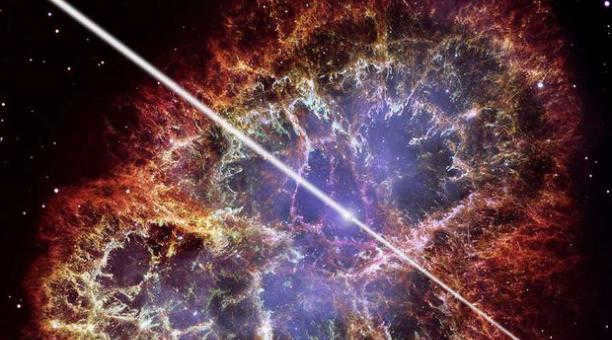
Astronomers Alexander Wolschan and Dale A. Fraile made an astonishing discovery in their research when they came across pulsar “PSR B1257+12”, which has a rotational period of 6.22 milliseconds.
Furthermore, their findings reveal the existence of several exoplanets with nearly circular orbits at distances of 0.2, 0.36, and 0.47 a.u. from the central pulsar. These planets have masses equivalent to 0.02, 4.3, and 3.9 times that of Earth, respectively.
What is the definition of X-ray pulsars?
X-ray pulsars are a unique type of pulsars that emit radio waves in the form of X-rays or gamma rays, resembling radiation cannons.
Scientists have made a remarkable discovery in the realm of interstellar phenomena – the existence of X-ray pulsars. These pulsars can be found in a compact star system called Cen X-3.
Interestingly, it was also found that these X-ray pulsars are part of a binary star system, consisting of a pulsar and a typically young O or B type star.
The pulsar emits a stellar wind from its surface, which interacts with its companion star and produces X-rays.
In 2020, Vikram S. Dillon, an astrophysicist from the University of Sheffield, made a groundbreaking discovery with his research team and the assistance of the Gran Telescopio Canarias (GTC). They identified celestial objects that they named “AR Scorpii”.
AR Scorpii is a binary system comprising a red dwarf that has approximately half the mass of our Sun and a white dwarf with a mass roughly equivalent to that of our Sun.
These two objects are positioned at a distance just three times greater than the distance between the Earth and the Moon, and they revolve around each other every 3.6 hours. While this type of binary system is relatively common, the team observed that the red dwarf exhibited peculiar behavior.
The red dwarf pulsates every two minutes, a frequency that is too rapid to be attributed to typical red dwarf physics.

